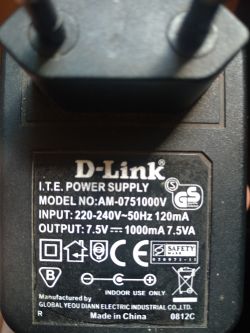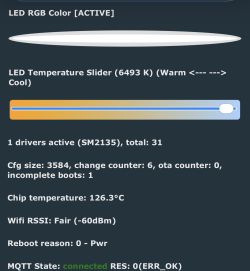Hello. i have a problem with the ESP8266 - 01 module, because when connected, neither the computer nor the smartphone can detect it. The module is connected to an Arduino Pro Mini 5V 16Mhz via a logic level converter. Firmware uploaded to the module according to the Elektroprzewodnik video on YT: https://www.youtube.com/watch?v=RaYZxqUTNWU
To power the module I tried to use a CP2102 type converter and a power supply(parameters attached) and a LM2596S boost converter. I suspect a problem with the power supply here, as previously the module sometimes detected the mains, now it's a total caboodle. I tried soldering a 10uF capacitor to the inverter for the input and output and a 10nF capacitor between the vcc and gnd of the module but this had no effect. I have also tried other power supplies such as a load ovark for an old Nokia. So my question: how should I power this module ? use 2 alkaline 1.5V batteries ? change to another inverter ? use some sort of filter to eliminate the voltage ripple of the inverter ? design such a filter ? if so what components should I use ? or is it just a faulty ESP ?
ovark for an old Nokia. So my question: how should I power this module ? use 2 alkaline 1.5V batteries ? change to another inverter ? use some sort of filter to eliminate the voltage ripple of the inverter ? design such a filter ? if so what components should I use ? or is it just a faulty ESP ?
Please give me some advice from people who have had the best experience with this module.
To power the module I tried to use a CP2102 type converter and a power supply(parameters attached) and a LM2596S boost converter. I suspect a problem with the power supply here, as previously the module sometimes detected the mains, now it's a total caboodle. I tried soldering a 10uF capacitor to the inverter for the input and output and a 10nF capacitor between the vcc and gnd of the module but this had no effect. I have also tried other power supplies such as a load
 ovark for an old Nokia. So my question: how should I power this module ? use 2 alkaline 1.5V batteries ? change to another inverter ? use some sort of filter to eliminate the voltage ripple of the inverter ? design such a filter ? if so what components should I use ? or is it just a faulty ESP ?
ovark for an old Nokia. So my question: how should I power this module ? use 2 alkaline 1.5V batteries ? change to another inverter ? use some sort of filter to eliminate the voltage ripple of the inverter ? design such a filter ? if so what components should I use ? or is it just a faulty ESP ?
Please give me some advice from people who have had the best experience with this module.





